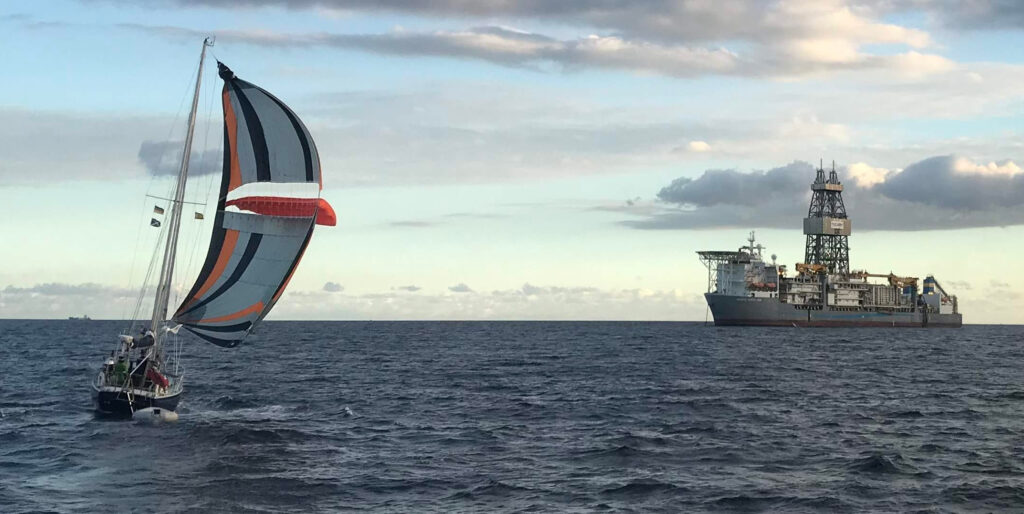Last week I was complaining that we motor too much. Since then we have been sailing north from Indonesia towards Singapore and Malaysia and have, until now, sailed all the way. So I thought it was time to explain how sailing actually works.
There are three sails permanently fixed to Artemis. Right at the front is a huge “genoa” which we can roll in or out as needed. Just behind that is a smaller “jib” that is also a roll sail. Behind the mast is the “main sail” that can be pulled up or down as needed.

If we are sailing straight down wind then we can unroll each of the roll sails, one to the left and one to the right. We use poles to hold them out and then they both catch the wind and pull the boat downwind.

If we want to sail across the wind, then we pull the main sail up the mast and unroll one of the roll sails. How much sail we use is dependent on the wind strength. The more wind, the less sail we use. Under the water we have a long keel that stops the boat slipping sideways. Instead, the sails convert the wind from the side to forwards movement.
We can also sail slightly upwind. This is where things get very strange. We pull the sails tight so that they no longer work as wind catchers but instead like an aeroplane wing stood on its side. Just like a wing lifts a plane in to the air, our sails “lift” us towards the wind. Once again the keel stops us slipping too much to the side. We can not sail straight in to the wind but can zig-zag towards our destination.

We have a fourth sail that we can pull up when needed. This is a Parasailor and works like a huge bag that catches all the wind when there is not so much and keeps us moving when the other sails are not enough.

Sailing is all about constantly adjusting the sails to make the best of the available wind. Or, when there is no wind, practicing serenity.

